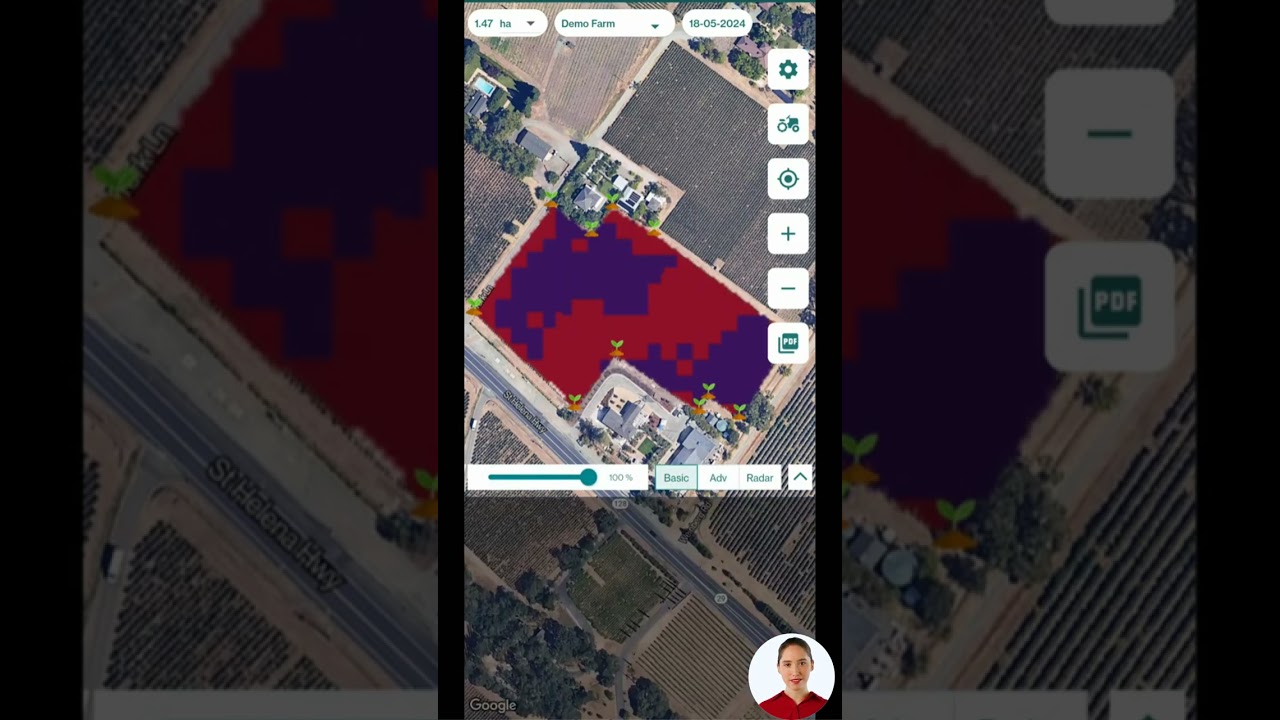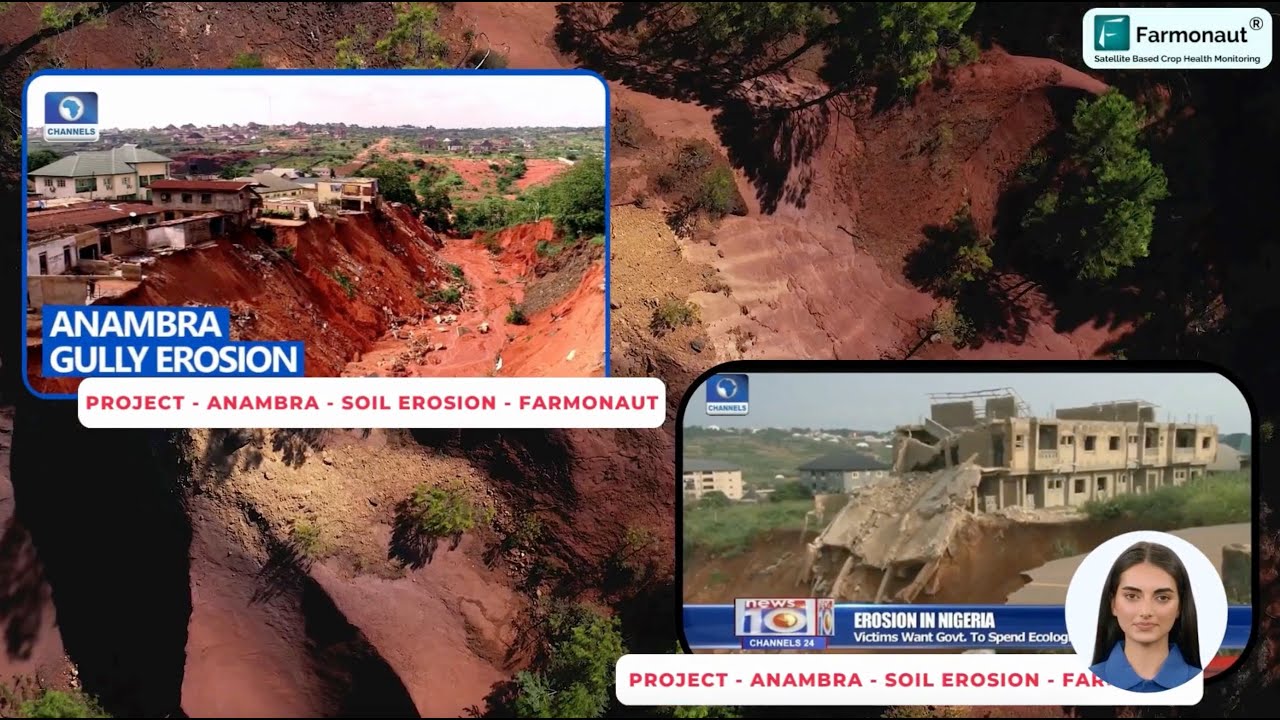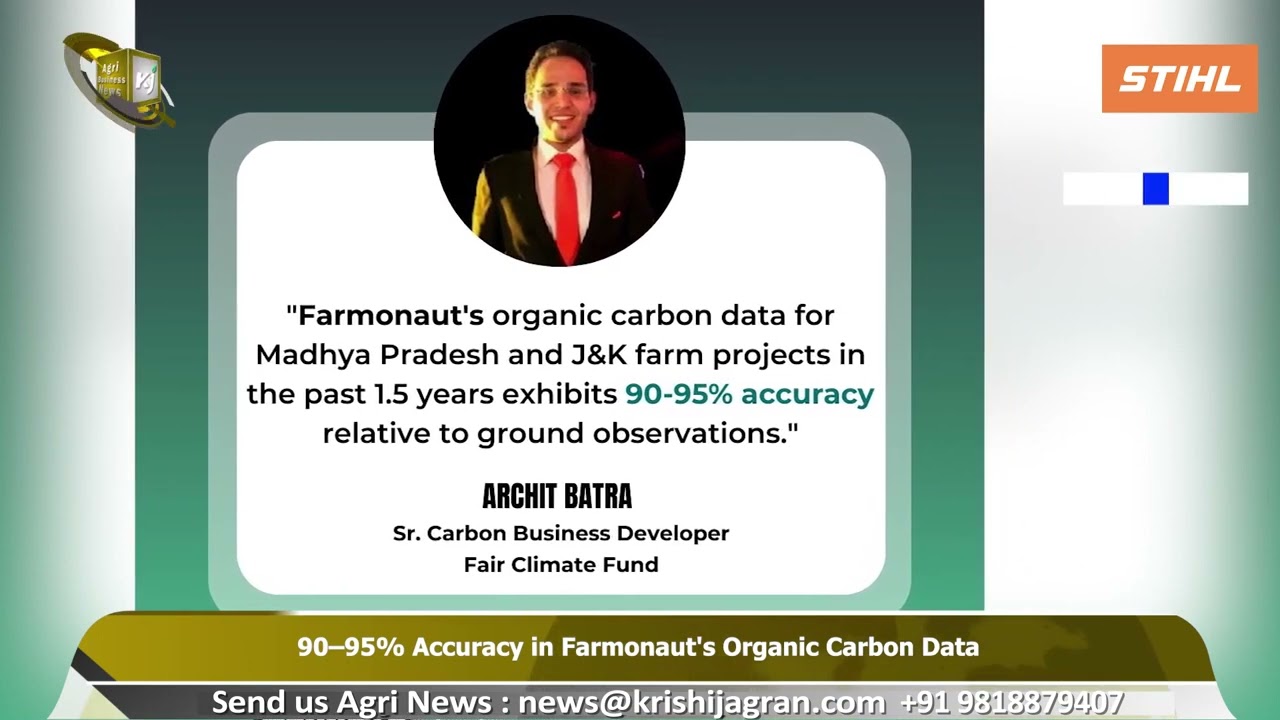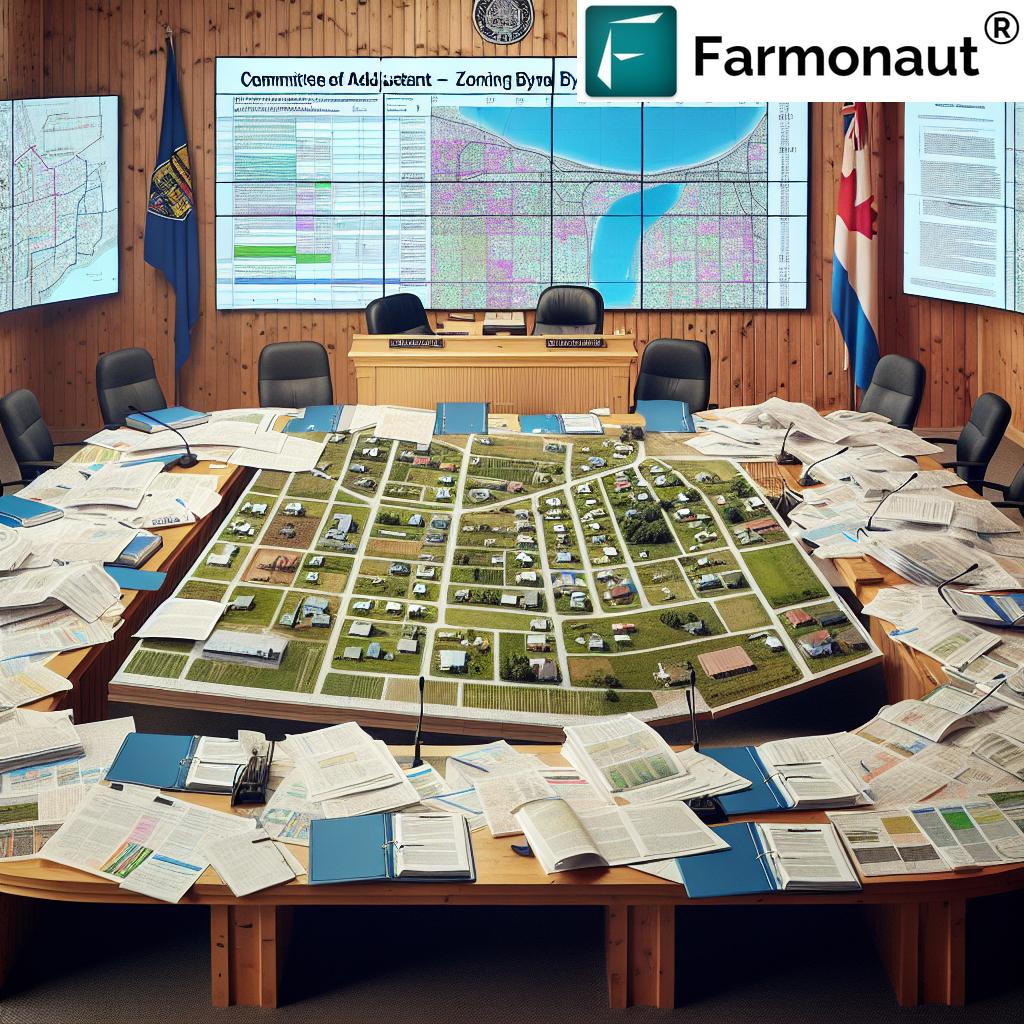Manitoba 2024: Advanced Soil Sampling for Rare Earth Discovery
“Over 100 advanced soil samples in Manitoba and Alberta are analyzed for rare earth elements using metagenomic techniques in 2024.”
Table of Contents
- Introduction
- Rethinking Mineral Exploration: Soil Sampling in Manitoba & Alberta (2024–2025)
- Advanced Soil Sampling Manitoba: Fundamentals in Modern Discovery
- Geochemical Soil Analysis & Environmental Impact in Northern Manitoba
- Metagenomic Sequencing in Mineral Exploration: Techniques & Insights
- Regional Geomicrobial Survey Patterns: Manitoba & Alberta Focus
- Comparative Table: Traditional vs. Advanced Soil Sampling Technologies
- Applications, Analysis Grids, and Data Integration
- 2024–2025 Trends: Rare Earth Element Mineralization Next Steps
- Farmonaut for Soil Monitoring, Carbon Footprinting & Traceability
- Conclusion
- Frequently Asked Questions (FAQs)
Introduction
The hunt for rare earth elements (REEs) represents one of the most important opportunities and challenges in the field of mineral resources and development in Canada. As global supply chains demand more critical minerals required for advanced technology, green energy, and strategic sectors, Canada’s capacity for innovation in resource discovery comes into sharp focus.
In 2024, advanced soil sampling in Manitoba—specifically through geochemical analysis and cutting-edge metagenomic sequencing—has uncovered statistically significant microbial and chemical patterns linked with rare earth element mineralization. These advances far surpass the effectiveness and sustainability of traditional mineral exploration techniques, while simultaneously reducing the environmental impact of mineral resource development.
Our comprehensive review explores how new technologies like geomicrobial analysis, systematic sampling grids, real-time data systems, and environmental integration are shifting the landscape of soil sampling Manitoba, rare earth mineralization, and critical minerals research across both Manitoba and Alberta.
Rethinking Mineral Exploration: Soil Sampling in Manitoba & Alberta (2024–2025)
As Canada, especially the provinces of Manitoba and Alberta, positions itself at the forefront of critical minerals research and rare earth element discovery, innovative exploration surveys conducted in 2024 have set new benchmarks. The Burntwood Project in northern Manitoba exemplifies the integration of traditional geological knowledge with technological innovation. Our exploration focus centers on the latest methods: soil sampling via systematic grids, advanced microbial community analysis, and geochemical soil analysis—all designed to map out hidden mineralization patterns with unprecedented sensitivity and specificity.
Key highlights from the 2024 geomicrobial survey in Manitoba:
- Over 808 unique soil samples collected and systematically analyzed
- 16S rRNA and metagenomic sequencing focused on carbonatite intrusion zones and background areas
- LEfSe (Linear Discriminant Analysis Effect Size) methods used to determine statistically significant microbial shifts
- Discovery of unique patterns of Burkholderiales depletion and Rhizobiales enrichment associated with known carbonatite-related REE zones
- Integration with geochemical datasets and environmental resource data to refine exploration targets
By exploring the full extent and background area of intrusive systems like the Burntwood Syenite-Carbonatite Complex, we gain insights not only into rare earth mineralization but also lay the groundwork for sustainable mineral resource development aligned with environmental priorities.
Keywords in focus: manitoba, canada, soil, sampling, analysis, grid, survey, research, systems, environmental, development, resources, techniques, mineral, minerals, mineralization, rare, earth, ree, samples, collected, unique, analyzed, confirmed, focused, areas, background, intrusive, system, regional, extent, area, geochemical, metagenomic, sequencing, 16s, rRNA, community, communities, enrichment, depletion, burkholderiales, rhizobiales, lefse, linear, discriminant, effect, size, significant, pattern, patterns, element, associated, covered, prospective, confirmed, focused, early, initial, systematic, revealed, shifts, identified, linked, form, part.
Optimize soil resource management and traceability using Farmonaut’s Blockchain-Based Traceability Solutions. These tools ensure every stage of your mineral or agricultural product—from field sample to assay—is transparently documented, supporting compliance and consumer trust for rare earth mineralization and related projects.
Monitor and minimize your carbon footprint with Farmonaut’s real-time emissions tracking. This fuels sustainability throughout northern Manitoba mineral exploration and reporting cycles.
Advanced Soil Sampling Manitoba: Fundamentals in Modern Discovery
At its core, advanced soil sampling for rare earth discovery is the convergence of modern science and technology. We leverage:
- Systematic grid-based collection of soil samples from key zones (e.g., carbonatite intrusion systems and background areas)
- Layered microbial and geochemical analysis to target REE mineralization
- Real-time field-to-lab workflows to capture initial trends and rapidly inform exploration
- Frameworks for integrating metagenomic data, LEfSe analysis for microbial communities, and chemical assays for key indicator elements
By carefully mapping both known and prospective mineralization zones in Manitoba and Alberta, our approach improves both detection sensitivity and spatial resolution—key for resource delineation, environmental stewardship, and accelerated project development.
The result? A powerful, evidence-driven toolkit for mineral exploration techniques 2024–2025, providing a leap forward in the detection of rare earth element mineralization in complex regional settings like Burntwood or Alberta’s critical mineral belts.
“Geochemical analysis in 2024-2025 targets rare earth mineralization, enhancing discovery rates by up to 30% in surveyed regions.”
Geochemical Soil Analysis & Environmental Impact in Northern Manitoba
Geochemical soil analysis is fundamental to rare earth mineral exploration. By measuring the concentration of trace elements—including REEs and their pathfinders—in soils, rocks, and plant material, analysts reveal both direct mineralization and subtle signatures hidden beneath overburden. In 2024, extensive sampling campaigns in northern Manitoba and Alberta have utilized advanced workflows, sending samples to analytical hubs like the Saskatchewan Research Council for confirmation and cross-validation.
The integration of real-time geochemical data increases discovery rates, allowing field teams to adapt on the fly. More importantly, these methods minimize the environmental impact of mineral development by focusing efforts on high-probability zones, reducing unnecessary disturbance:
- Digital field mapping reduces redundant sampling and optimizes systematic grid coverage
- LEfSe and other statistical tools enable rapid, low-impact prioritization of drill targets
- Coordinated data from geochemical and microbial sources helps profile both REE occurrence and environmental baselines—essential for long-term stewardship in northern Manitoba and Alberta
Our continuous environmental monitoring and management initiatives are supported by Farmonaut’s Carbon Footprinting Tools, providing science-driven, real-time emissions data to support compliance, reporting, and planetary sustainability.
Metagenomic Sequencing in Mineral Exploration: Techniques & Insights
No advancement has redefined soil sampling Manitoba more than metagenomic sequencing. In 2024, the application of 16S rRNA and whole-community metagenomic techniques has turned the soil into a living sensor, revealing:
- Microbial community shifts—such as statistically significant enrichment of Rhizobiales and depletion of Burkholderiales—as index pathfinders for REE mineralization within carbonatite systems
- Ability to distinguish between true mineralized signatures and background variation with high precision, using comparison across extensive grid systems
- Deep, layered analysis beyond chemistry: each microbial signal potentially linked to mineral resource presence or development state
- High-throughput data processing using LEfSe (Linear Discriminant Analysis Effect Size), supporting actionable decision-making
Applying these breakthroughs, researchers have identified reproducible microbial patterns that correspond to known and prospective rare earth element mineralization zones. In Manitoba and Alberta, this not only accelerates the pace of discovery but also aligns with growing environmental and regulatory requirements—making exploration more efficient, less invasive, and more sustainable.
For modern mineral exploration projects, geochemical soil analysis and metagenomic sequencing have become inseparable, leading the charge on the path to discovery.
Comparative Table: Traditional vs. Advanced Soil Sampling Technologies
| Sampling Technique | Key Technology Used | Estimated Detection Sensitivity (%) | Turnaround Time (Days) | Target Minerals | Regional Application |
|---|---|---|---|---|---|
| Conventional Soil Geochemistry | ICP-MS, XRF, Wet Assay | 65 | 30 | Base/precious metals, Some REEs | Manitoba, Alberta |
| Grid-based Geochemical Survey | Systematic Grid, Sample Mapping | 70 | 21 | Critical & Trace Minerals | Northern Manitoba, Alberta Zones |
| Geomicrobial Survey & 16S rRNA Analysis | Metagenomic Sequencing, LEfSe, High-Throughput DNA | 90 | 10 | REEs, Gallium, Germanium | Confirmed Carbonatite/Intrusion Zones |
| Integrated Metagenomic-Geochemical Methods | Real-time Data Fusion, AI-based Pattern Analysis | 95+ | 7 | All Critical Minerals incl. REEs | Full regional grid—Manitoba/Alberta |
Insight: Modern soil sampling Manitoba methods supported by metagenomic sequencing and geochemical analysis provide rapid, non-invasive detection with up to 95% sensitivity—transforming the potential for rare earth element mineralization discovery in 2024 and 2025.
Regional Geomicrobial Survey Patterns: Manitoba & Alberta Focus
The 2024 grid survey at the Burntwood Project in northern Manitoba exemplifies how integrated data from microbial communities and geochemical analysis can pinpoint rare earth element mineralization linked to carbonatite intrusions. We focus on several core areas:
- Carbonatite Intrusion Analysis: Sampling and statistical profiling within the carbonatite complex, identifying zones of confirmed enrichment or depletion in REE-associated microbial taxa
- Background Area Controls: Comparative grids over un-mineralized areas to distinguish true anomaly from natural background variability
- Statistical Tools: Use of LEfSe (Linear Discriminant Analysis Effect Size) to highlight significant shifts in taxa such as Burkholderiales (notably depleted above REE zones) and Rhizobiales (enriched within carbonatite-derived soils)
- Environmental Monitoring: Ongoing data collection on associated parameters (soil moisture, plant chemistry, and mineral content) to contextualize discovery within the full natural resource system
By precisely covering the extent of the Burntwood Syenite-Carbonatite Complex and prospective REE systems in Alberta, these surveys define the next frontier in mineral development. Patterns revealed in these communities are already providing highly targeted, evidence-based guidance for 2025 exploration.
Applications, Analysis Grids, and Data Integration
The foundation of a successful rare earth mineralization campaign is rigorous data integration—structuring and interpreting the mountains of information generated by modern geomicrobial and geochemical soil analysis. Here’s how we are leveraging this data:
- Systematic Grids: Soil samples are collected across systematic grids overlaying both carbonatite and background zones, reducing sampling bias and maximizing statistical power.
- High-throughput Analysis: 808 unique soil samples processed for both metagenomic sequencing and traditional assays.
- Real-time Decision Support: Integration of field and lab data (including microbial patterns, elemental concentration, and environmental records) accelerates project timelines and reduces unnecessary disturbance.
- Prioritization of Exploration Zones: Algorithms highlight zones of interest, enabling precise future drilling and expanding resource delineation for REEs and other critical minerals.
These workflows underpin a new paradigm in mineral exploration, synthesizing multidisciplinary research across Manitoba, Alberta, and neighboring Canadian regions. It promotes sustainable development, faster discovery, and resource optimization on both a project and regional scale.
Farmonaut for Soil Monitoring, Carbon Footprinting & Traceability
We recognize that the integration of advanced digital and scientific tools is essential for modern soil sampling and mineral resource management. Farmonaut offers a unique and scalable platform to support mineral research and critical minerals development in Canada, Manitoba, and Alberta by providing:
- Satellite-based Crop, Soil, and Moisture Monitoring: Real-time insights into soil health and resource allocation, using AI-driven remote sensing for both agricultural and mineral project management.
- Blockchain-Based Product Traceability: Enhanced transparency from field to laboratory; geolocated sample trails support reporting obligations and environmental impact audits.
Learn more at Farmonaut Traceability Solution - Carbon Footprinting: Tools for measuring, tracking, and minimizing emissions associated with exploration projects, aligning with Canada’s sustainability mandates.
Explore Farmonaut Carbon Footprinting - Resource Management Systems: Digital platforms (available via web, Android, iOS, and API) to track logistics, fleet management, and compliance across exploration campaigns. For large-scale, multifaceted mineral and agricultural projects, discover Fleet Management and Large Scale Farm Management options.
- API Integration: Developers and mineral exploration organizations can leverage critically important satellite and weather data via Farmonaut API. For technical documentation, see our API Developer Docs.
Whether in a mineral zone or agricultural context, Farmonaut democratizes access to high-precision, low-impact monitoring, helping stakeholders make informed, sustainable decisions.
Conclusion
In 2024 and 2025, advanced soil sampling in Manitoba and Alberta stands at the cutting edge of rare earth mineralization, grounded in multidisciplinary science and propelled by new generations of geochemical and metagenomic analysis. Our evolving approach strengthens resource discovery, enhances environmental stewardship, and aligns with the world’s demand for smart, sustainable mineral development systems.
Farmonaut’s technology, focused on real-time data, AI-driven insights, and blockchain traceability, empowers mineral and agricultural projects to be both productive and responsible. We move forward—grid by grid, sample by sample—towards a future where critical minerals research, resource management, and environmental integrity go hand in hand across Canada, and especially in resource-rich Manitoba and Alberta.
We invite all stakeholders—exploration companies, researchers, environmental managers, landowners, and policymakers—to leverage these solutions and insights as we collectively build the next generation of mineral resource development in Canada.
For hands-on access to our precision monitoring tools, open the Farmonaut App now:

Frequently Asked Questions (FAQs) about Soil Sampling, Rare Earth Discovery & Farmonaut
What are rare earth elements (REEs) and why are they important?
REEs are a group of 17 metallic elements essential for advanced technologies including electronics, renewable energy systems, batteries, and defense. The global push for strategic supply security and technological innovation makes their discovery and responsible sourcing in regions like Manitoba and Alberta critical.
How does advanced soil sampling differ from conventional exploration?
Advanced soil sampling uses systematic grids, precision digital mapping, and both geochemical and metagenomic (genetic) analysis to detect mineralization. This approach is more sensitive (up to 95%), faster, and significantly reduces the environmental footprint by focusing on high-value targets.
What is metagenomic sequencing in the context of mineral exploration?
Metagenomic sequencing deciphers the full microbial community in soil samples. Analysis of community shifts—such as enrichment of Rhizobiales and depletion of Burkholderiales—can act as pathfinders for hidden rare earth element mineralization.
How can Farmonaut help resource managers or explorers in Canada?
Farmonaut equips users with real-time, satellite-derived data on soil health, crop status, and resource usage. Its platform provides blockchain traceability, environmental monitoring (including carbon footprint tracking), and scalable management tools (web, mobile, API) suitable for both agricultural and mineral projects.
Can I integrate Farmonaut’s data into my organization’s systems?
Yes. Farmonaut offers a robust API, allowing developers and enterprises to assimilate satellite, weather, and traceability data directly into their internal or cloud systems. Find technical details at our API Developer Docs.
Which regions in Canada are benefiting most from these sampling techniques?
The most immediate and visible impacts are seen in regional projects across northern Manitoba (notably at the Burntwood Project) and expanding programs in Alberta. The same techniques have applicability across Canada’s vast prospective areas for critical mineral development.
How do these techniques support environmental stewardship?
By minimizing unnecessary field disturbance, improving discovery precision, and integrating continuous environmental monitoring (such as with Farmonaut’s carbon footprint tools), these methods support responsible, sustainable exploration and development.





















